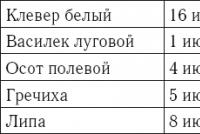Give the definition of the workplace
The workplace is an organized and indivisible link in the production and technical process. It must be serviced by one or more workers and specialists. In modern conditions workplace equipped with the necessary equipment.
Without a workplace, the labor activity of a single specialist or worker is impossible. This is a spatial area of employment.
In the modern world, the workplace:
- Equipped with the necessary basic and auxiliary means;
- Is determined on the basis of the norm of labor legislation;
- It is assigned to one or several employees;
- Serves to perform production and management work.
The workplace occupies a part of the service or production area, on which the necessary tools and objects of labor are also placed.
Jobs are classified according to the nature of the work and the characteristics of the production process.
Jobs are:
- Simple - it is served by only 1 employee from 1 unit. For example, 1 programmer serves only 1 computer;
- Multiple - serviced by a worker from several units.
Such jobs are common in the textile and engineering industries. For example, 5 weaving machines are served by 1 seamstress; - Collective - 1 unit is serviced by several workers. Such jobs are characteristic of the chemical, metallurgical, petrochemical and a number of food industries. An example of such a workplace is a large rolling mill. It serves up to 120 workers simultaneously;
- Stationary - is located on a specific area and is equipped with the necessary tools and objects of labor.
Everything you need for a successful workflow is at hand. For example, an accountant’s workplace — there is a computer, a printer, a scanner, and other objects of labor. - Moving - it moves depending on the location of the necessary objects of labor.
Such a place moves after the objects of labor, without which it would not be a workplace. An example is a rig. It moves after the place of drilling. - Spatial - the employee has only a limited place on the square or just a place where he must appear every day at the beginning of the working day or at the call of the authorities.
Such jobs are determined by the nature of the work, and not by the production process or the means of labor. For example, exploration or grazing. The employee does not have a specific place where he works. - Free - the employee can use for his work any place in the office and industrial premises.
The company should have exactly as many jobs as provided by the nature of the work and the specifics of the production process, as well as the volume of output.
The overestimation of the number of jobs leads to an increase in irrational expenses for their equipment, maintenance and repair.
Mandatory requirements for the workplace are contained in the following documents:
- TK RF - the code has many uses about the workplace. For example, in Art. 212 of the Labor Code of the Russian Federation states that it must comply with the working conditions;
- GOST, SaNPina and other regulations - for example, GOST 12.1.005-88 SSPT. "General sanitary and hygienic requirements for air in the working area";
- International standards.
Each workplace must be accounted for and have a passport, which contains basic information about it. In addition, you need to regularly certify jobs.
Technological process - is part of the production process, containing targeted actions to change and (or) determine the state of the subject of labor.
The technological process can be related to the product, its integral part or to the methods of processing, shaping and assembling.
The objects of labor are blanks and products. The technological process is divided into a part of technological operations.
Technological operation - This is a complete part of the technological process, performed at one workplace. The operation is associated with the implementation of the legal scope of work and is the main element of production planning and accounting.
Technological operation is divided into settings, positions and transitions. The main part of the operation is the transition, which is a set of processes for processing one or a set of parts, with the same tool or its set, with constant mode.
A workplace is a zone.Equipped with the necessary technical means, in which the labor activity of the performer or group of performers who jointly perform one work or operation is carried out.
At the workplace, the main goal of labor is achieved - quality, cost-effective and timely manufacturing of products or performance of a specified amount of work.
To achieve this goal, technical, organizational, economic and ergonomic requirements are imposed on the workplace.
On the technical side, the workplace should be equipped with advanced equipment, the necessary technological and organizational equipment, tools, instrumentation provided by the technology, lifting and transport vehicles.
On the organizational side, the equipment at the workplace should be rationally located within the working area; found the option of optimal maintenance of the workplace with raw materials, materials, blanks, parts, tools, equipment repair and tooling, waste collection; safe and healthy working conditions are ensured.
On the economic side, the workplace organization should ensure optimal employment of workers, the highest possible level of labor productivity and quality of work.
Ergonomic requirements occur in the design of equipment, technological and organizational equipment, planning workplace.
The labor process of an employee, regardless of what functions he performs, is characterized by inherent laws that determine:
Employee placement in the work area;
The position of the working area;
The sequence, number and spatial extent of the components of the labor process labor movements;
The sequence of the person entering the work;
The appearance, build-up and reduction of fatigue.
Workplace - spatial work area:
Equipped with the necessary basic and auxiliary means; - determined on the basis of labor and other standards;
Assigned to one or a group of workers to perform certain production or management work.
Jobs vary:
By the number of performers: individual and collective jobs;
By type of production: main and auxiliary;
By type of production: mass, serial and single;
By degree of specialization: universal, specialized and special;
According to the level of mechanization: mechanized, automated, for manual work;
By the number of equipment: single, multiple.
Work post - is a plot of the production area, equipped with technological equipment to accommodate the car and designed to perform one or more homogeneous work.
Post includes one or more jobs.
Workplace - this is the area of labor activity of the contractor, equipped with technological equipment, devices and tools for performing specific work.
Jobs in the diagnostic station are a system of inextricably linked links. This relationship is determined by the unity of the production process, proportional to the ratio of shift tasks at all workplaces, the communication of industrial circuits supplying compressed air, electricity, coolant, lubricants, etc.
Depending on the characteristics of the production process and the nature of the work performed, the workplace may be: permanent and non-permanent.
Permanent workplace - the place where the worker is most of his working time (more than 50% or more than 2 hours continuously). If at the same time the work is carried out in different points of the working area, the entire workplace is considered to be a permanent workplace. work zone (GOST 12.1.005-88). Permanent jobs are fixed, located on a fixed production area and equipped with stationary means of labor: machines, mechanisms, tools. Objects of labor are served directly to the workplace.
Non-permanent or non-stationary jobs - Places with geographically varying work areas. The worker has not a fixed workplace, but only a delineated space. It is assigned only permanent place attendances - a special room or office where records of the arrival and departure of an employee are kept and his diligence is monitored.
Some work areas may be the same for different workplaces. Therefore, it is advisable to carry out measurements first in the main divisions, and then - in the auxiliary. This will avoid measuring repetitive factors in the same place for different categories of workers.






